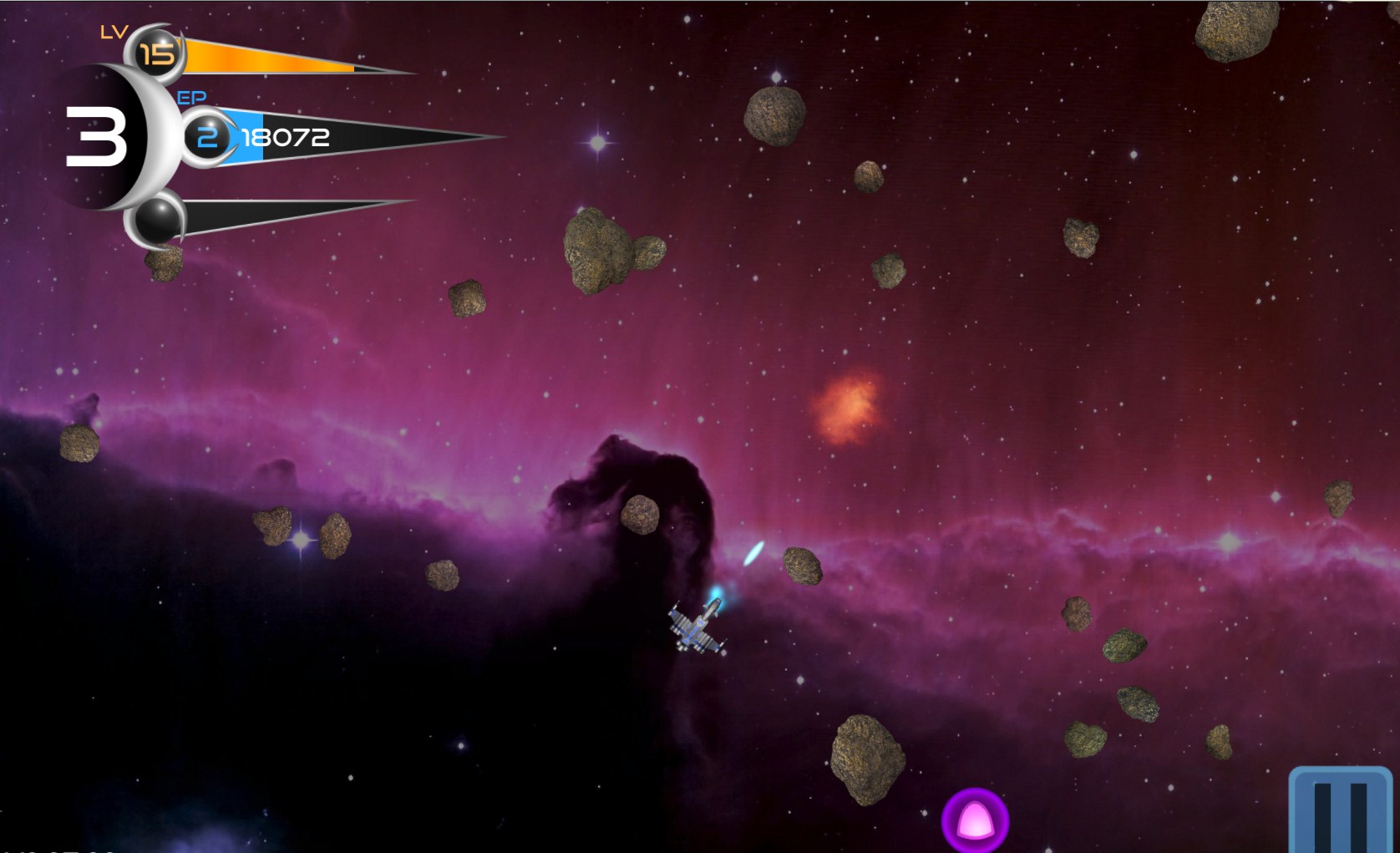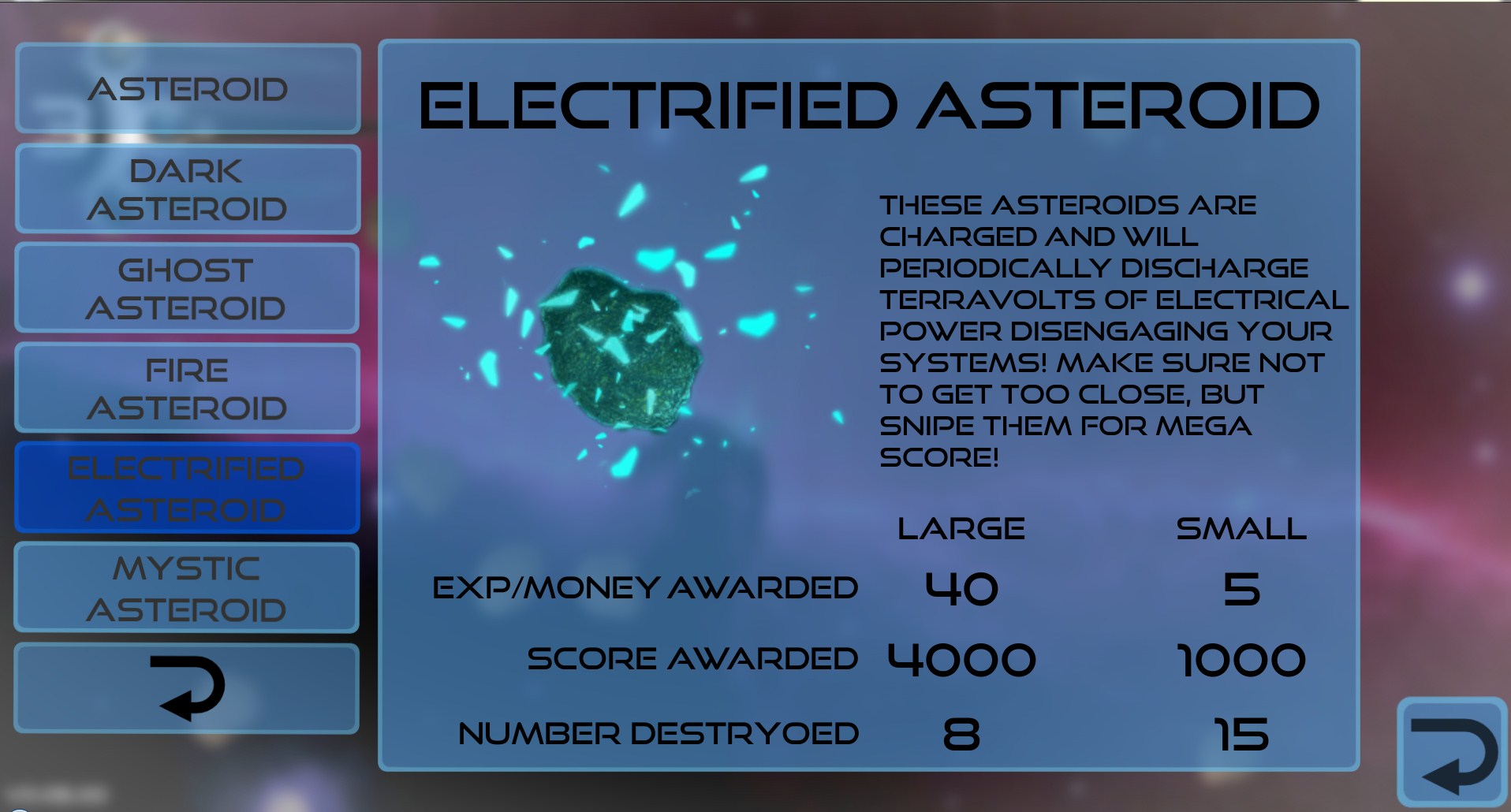From the first laser shot, Cosmos brings an air of familiarity — except there’s no air in space and you’re a lone pilot with nothing to do but survive. Reminiscing on classic arcade shooters like Asteroids, Cosmos plays almost identically as its seminal predecessor. The beta title tries to modernize the golden-age arcade era while remaining loyal to the classic originals.
The goal of Cosmos is to survive and get the highest score possible. You’re a stranded pilot that must avoid flying asteroids by shooting them with a laser. If you’re used to modern arcade shooters like Geometry Wars and Super Stardust HD, Cosmos will take a few minutes to adjust to. Moving forward and backward propels your ship in whichever direction you are facing, making every input in the game significant. The controls are deliberately floaty, increasing the threat of the incoming barrage of asteroids.
There is only one mode so far in Cosmos. The survival mode sets you on a wraparound arena, where there is a set amount of space but the map is unbounded. Your ship, along with the asteroids, can leave one side of the screen and immediately appear on the opposite side. As you progress through the level, more asteroids appear — as well as three bosses.
Six different types of asteroids randomly appear in Cosmos, each with varying levels of danger and reward. At first, the basic asteroids are the most prominent, dishing out small amounts of experience and score. After a while, though, Dark Asteroids, Electrified Asteroids, and Mystic Asteroids start popping up in waves. These specialty asteroids have extra effects like paralyzation and burning, but are worth the risk in return for extra points.
As the number and diversity of asteroids increase, so do your abilities. After leveling up a few times, special power-ups like a triple shot and shield can be collected on the map. Destroying asteroids awards Energy Points, along with experience. These Energy Points activate abilities like slowing down time and boosting, which can be used to get out of a bind when short on lives.
Just as you get acquainted to the different types of asteroids and abilities, the first boss appears to shake things up. Oculus Impetus is the first threat in the game that actively tries to kill you rather than incidentally flying into your ship. The spherical demon blasts massive lasers through multiple outlets. With full health the boss is deceiving, only shooting one laser at a time and barely moving. As you destroy the projectors, however, Oculus Impetus will regenerate and act more and more aggressive until his health is depleted. After defeating the first boss, the game returns to its normal state — albeit far more chaotic.
Overall, Cosmos so far does a good job at sticking to its roots, while bringing a slightly modern touch to the classic Asteroids gameplay. The controls are difficult but fair — and as you adjust to them it becomes easier to knock through the first boss and rank up your points.
The game could use some more variety like different maps, more music, and perhaps a co-op mode, but for what it is, it’s an addicting game with simple yet satisfying gameplay. As the game continues being developed, we can look out for more refinements and extra content to be in the final build.
Have you been able to play Cosmos yet? If so, what do you think about it? Let us know in the comments below!










Published: Feb 4, 2017 12:06 am